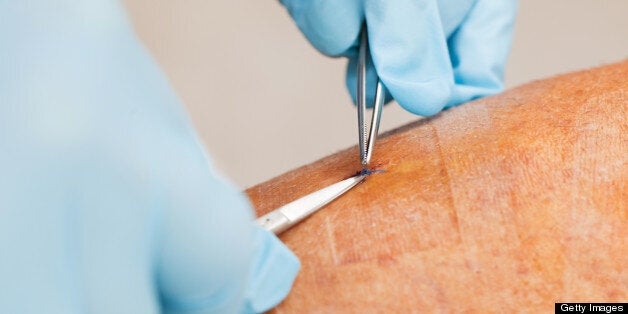
For the first time in my life I feel like a dinosaur. Not the big lumbering sort portrayed in Jurassic Park, but rather the rows of respectable dinosaurs that used to sit in medical conferences in late 1999 and the early 2000's, pouring scorn on my work into fixing varicose veins through pin-hole incisions and preventing me publishing my results in peer-reviewed journals. As with all dinosaurs, the world moved past them and now you cannot search for varicose vein surgery without being offered those same endovenous techniques that I introduced and have been teaching for many years.
Winding the clock forwards two and a half years, I now run The College of Phlebology. As part of this venture I have a worldwide network of doctors, researchers and vascular technologists who are all involved actively in the management of venous disease and who regularly discuss venous issues online.
Ever since the advent of treating veins with heat (a procedure called endovenous thermoablation) we have used ultrasound to check which veins need treatment in the first place, to guide the endovenous surgery and then to check the veins after the surgery to find out how successful the new techniques are.
For those of us using the most established endovenous techniques and who have used the protocols developed over time, we are used to having long term success rates of well over 95%. In my view, any doctor or clinic not getting such results should stop treating patients and look into their treatments to find out what is going wrong.
Worryingly, over the last couple of years, a trend has started growing in the venous world towards "patient reported outcomes" - in other words regardless of whether treatment is successful or not, the measure has become whether patients are happy with their treatment or not.
On the surface, following a treatment, the condition may look to have been treated well and the patient happy, however without an ultrasound scan to show what is going on internally it is impossible to say if a treatment has been successful. The patient may be happy initially but this won't last if they are returning to a clinic years later to be retreated for something that could have been picked up on almost instantly following the first treatment.
Reports presented in America at the end of 2012 focusing on the success of closing veins with ultrasound guided foam sclerotherapy have shown disappointing success rates compared to endovenous techniques. However, the FDA in America (the overseeing body for medical devices and drugs) have accepted the claim of many doctors that it is not the success or failure of the technique that is important, but the satisfaction of the patient having had the procedure. As an expert in this field, it baffles me how medical professionals are not more concerned about ensuring patients are treated correctly in the long term.
In my personal practice, my team and I have successfully amalgamated all of the available techniques and use combination treatments of endovenous heat ablation for the larger veins and ultrasound guided foam sclerotherapy for the smaller veins - as well as other techniques that we have good evidence to suggest give excellent results for our patients.
I recently started a poll amongst the members of The College of Phlebology, confident that most right minded venous experts would agree with my stance. My argument was simple. We know that ultrasound can show us which veins are not working. We know that we can use ultrasound so that we can be certain of closing these veins depending on size and location. We know that we can use ultrasound to check that we have stopped the venous reflux in the immediate and long term. Finally we can show that the blood flow in the legs has been restored to normal and the venous reflux has been cured. As such, what could be more important scientifically than technical success?
I posed the question.... Can we really accept patient reported outcomes as the gold standard we should strive for over technical success? Particularly when we know that a patient may appear happy because of the environment they were treated in and the good customer service they received but, if their veins come back again quickly due to technical failure, then their happiness will quickly fade. However by that stage, the report will have been made and the patient classified as a successful treatment.
Of course it appears very arrogant to say that I know that a technical success should lead to a happy patient. Moreover, medicine is a patient centric profession and a happy patient is an exceptionally important outcome. But to make a happy patient the most important factor when measuring success of treatment seems crazy. There are many ways to make people happy that do not involve good medicine or technical success.
I lost the poll with 80% of people disagreeing with my arguments.
I am clearly a dinosaur.